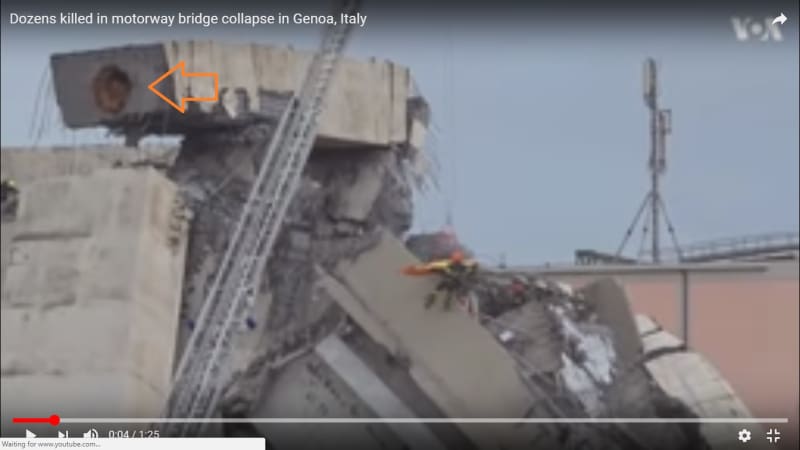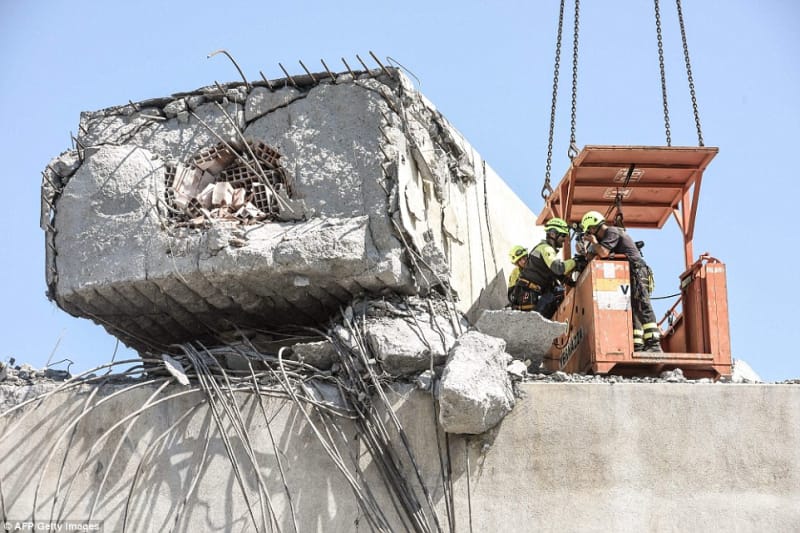translated "I problemi dello “schema Morandi” e quel precedente del 1964"
Rome - After the tragedy that took place on the Morandi bridge in Genoa, Antonio Occhiuzzi, director of the Institute of Construction Technology of the National Research Council, recalled that the prefabricated reinforced stays made of other viaducts that are similar (like in Maracaibo, in Venezuela, but also in Basilicata), have shown a relatively reduced durability. And the stability of a bridge of this type depends fundamentally on the behavior and the condition of the stays.
In the case of the Genoa bridge, Occhiuzzi noted, some of the stays have been modified with clearly visible reinforcement, but the collapsed section was not modified. It is necessary to understand the background of the decision to reinforce some stays, but the same treatments have not been carried out on the other stays that are similar.
The previous collapse of other infrastructure:
Then Occhiuzzi recalled the previous failure of road infrastructures: "In July 2014 a spill of the Petrulla viaduct collapsed, on the state road 626 between Ravanusa and Licata (in the province of Agrigento), breaking in half due to the crisis of the pre-compression system; in October 2016 a flyover in Annone (Lecco) collapsed due to an exceptional load that was incompatible with the strength of the structure, which however was very aged compared to the original capacity; in March 2017 an overpass of the Adriatic motorway collapsed, but due to an accidental event during maintenance work; in April 2017 a span of the tangenziale di Fossano (Cuneo) collapsed, breaking in half in the absence of vehicles in transit and with methods very similar to those of the Petrulla viaduct".
The precedents of the "Morandi scheme":
A twin bridge of the one that collapsed in Genoa was constructed in Venezuela in 1964. This bridge was later was struck by an out-of-control tanker: That bridge was the General Rafael Urdaneta bridge over the 8.7-kilometer-long bay of Maracaibo, with 135 spans, of which there are 6 towers built with the same cable stayed scheme used by the designer Riccardo Morandi in Genoa.
It was April 1964 when the oil tanker Exxon Maracaibo, from 36 thousand tons, due to an electrical failure lost control at the exit from the Maracaibo lagoon and ended up against the 30 and 31 piers of the bridge, more than 600 meters away from the bays designed for the passage of naval traffic, with such violence that made them completely collapse, dragging into the sea 3 consecutive bays of the bridge. This type of event had not been taken into consideration during the design.
The expert: those bridges have always had deformation problems
Professor Andrea Del Grosso also spoke on the same issue, for years he was a professor of construction techniques at the University of Genoa, and today he teaches a course on Infrastructure Management and Monitoring: "Morandi has always had problems with corrosion on the stays and of excessive deformation, due to the loss of tension of the steel cables inside the prestressed concrete structures. But at the time of construction the deformations of the concrete were not known as today. We have been studying the problem of the degradation of these structures only for twenty years ".
Del Grosso added that the A10 bridge over the Polcevera River was very innovative at the time. A steel structure was more suitable for the project scope. However, at the time there were questions about steel, for reasons of duration, while Italian industries had great experience in reinforced concrete. But then the deformations of the concrete were not as known, at least not as known today; The bridge on the Polcevera River according to the teacher "was a critical structure, especially for the use of prestressed concrete
Link I problemi dello “schema Morandi” e quel precedente del 1964

